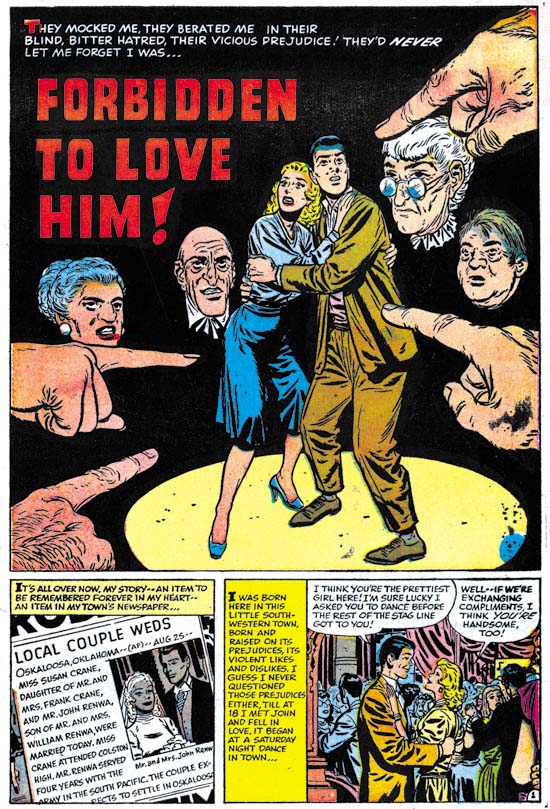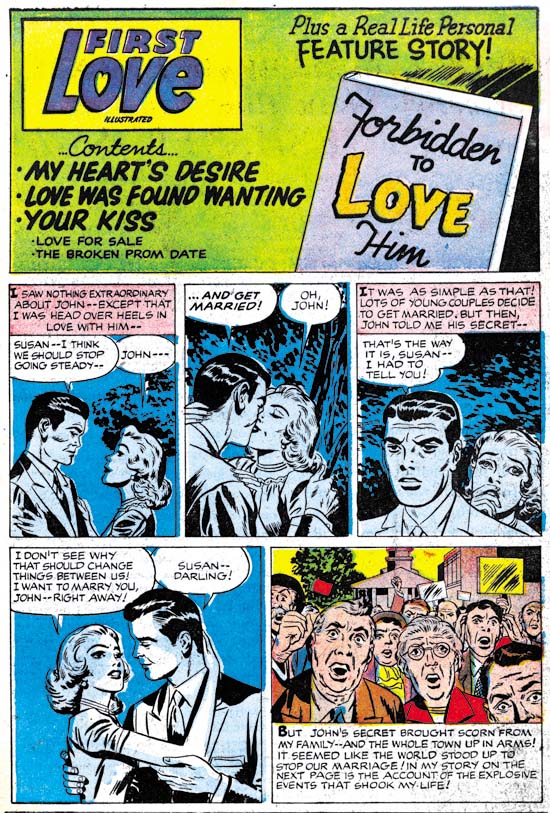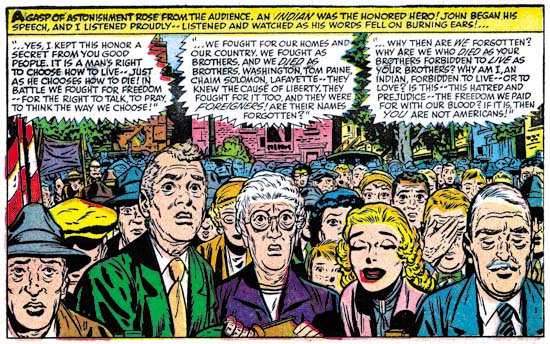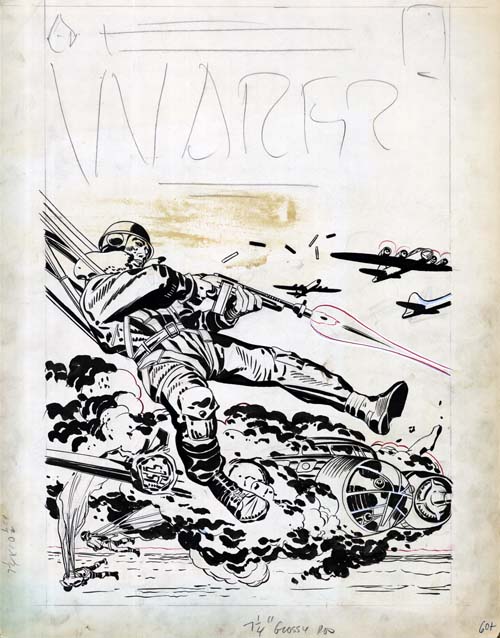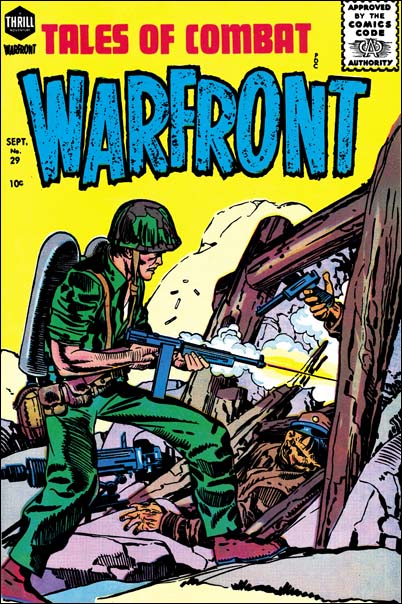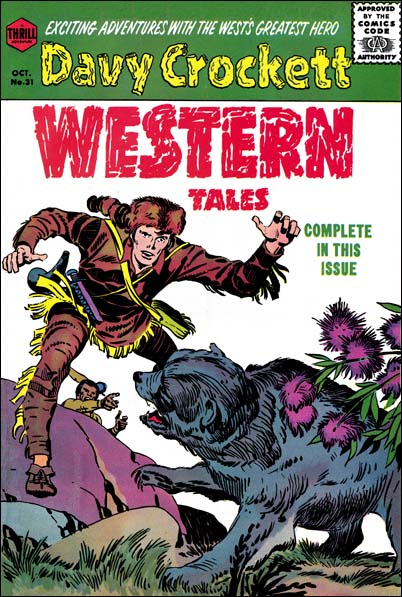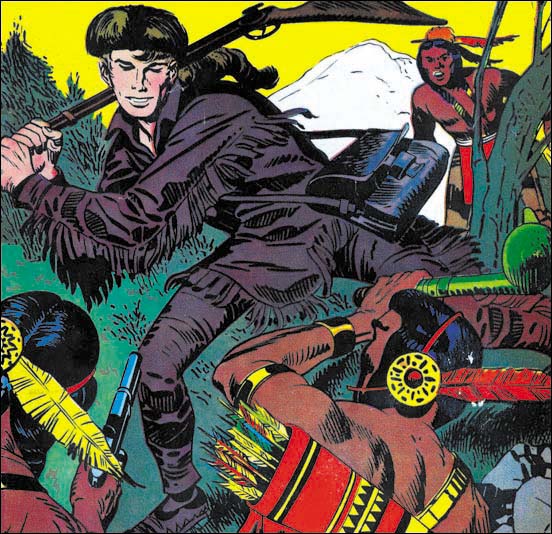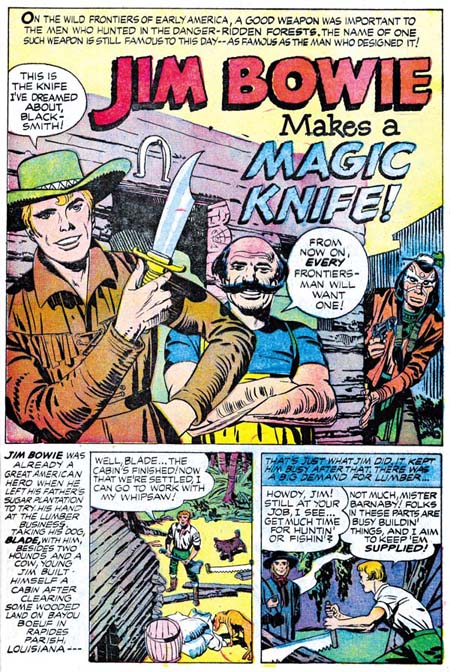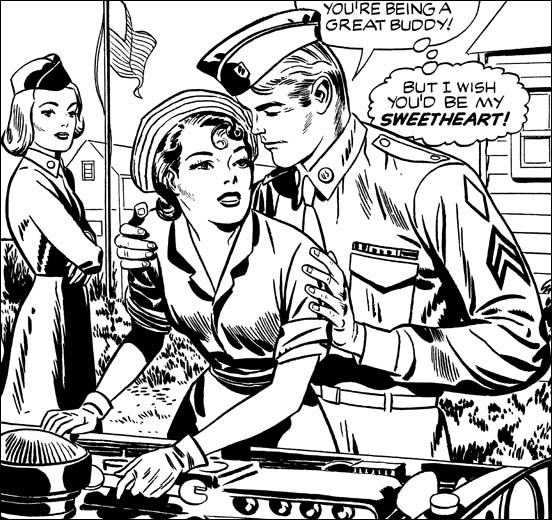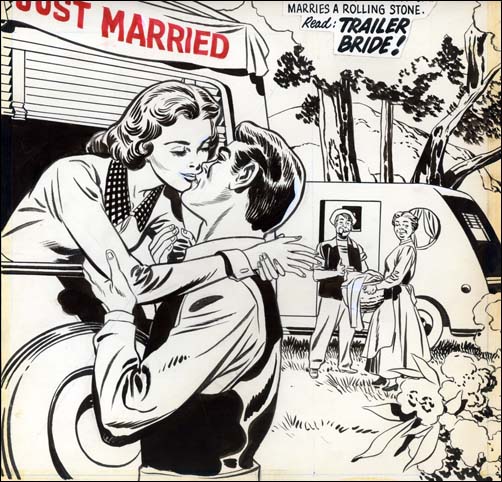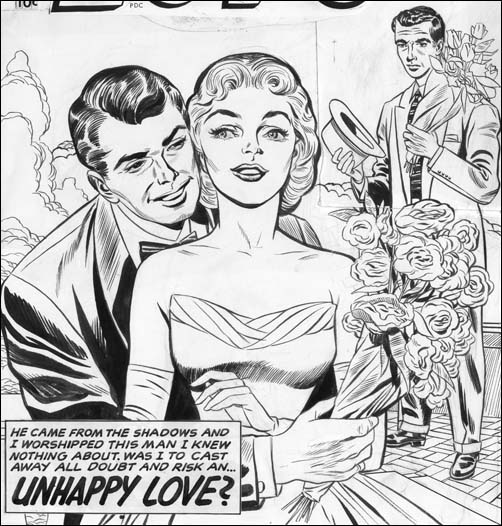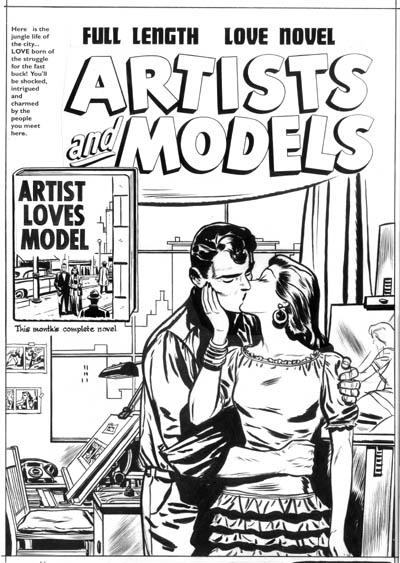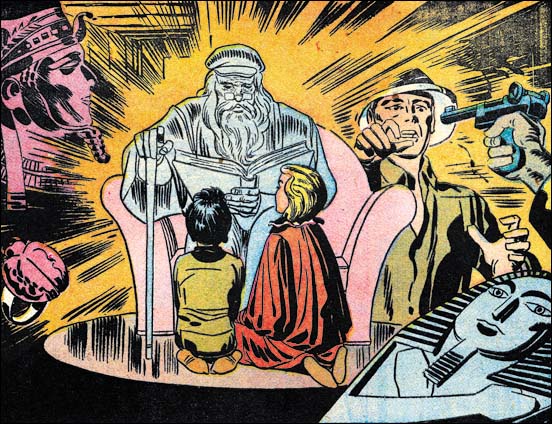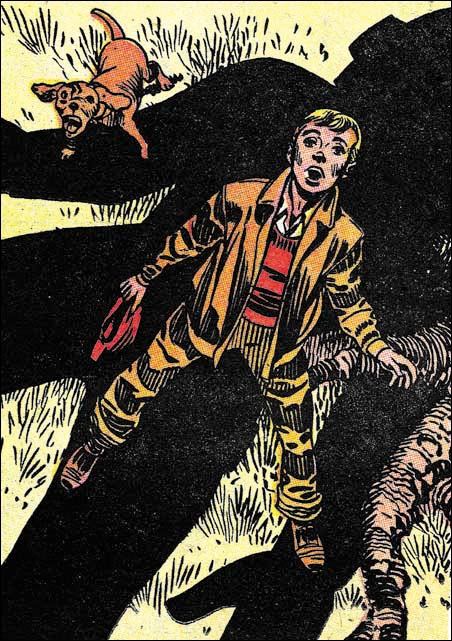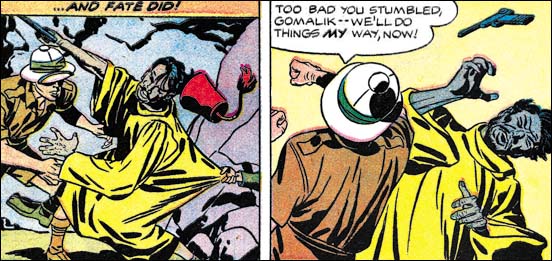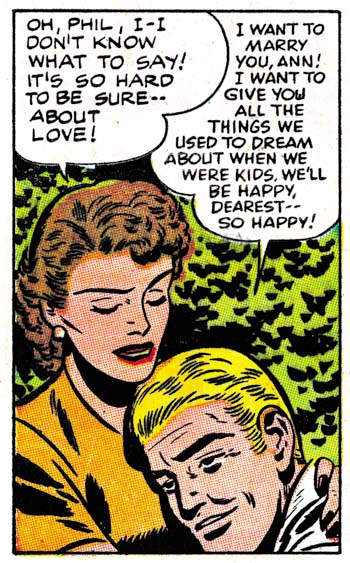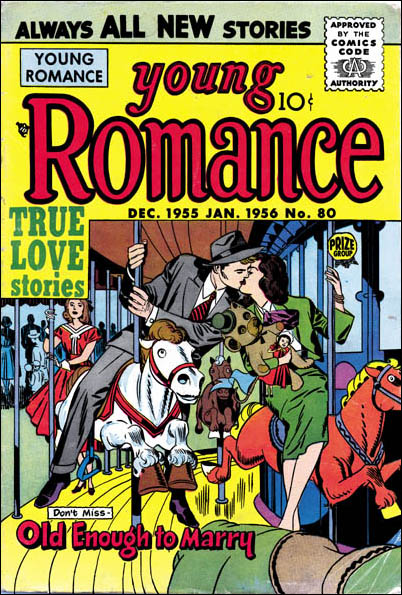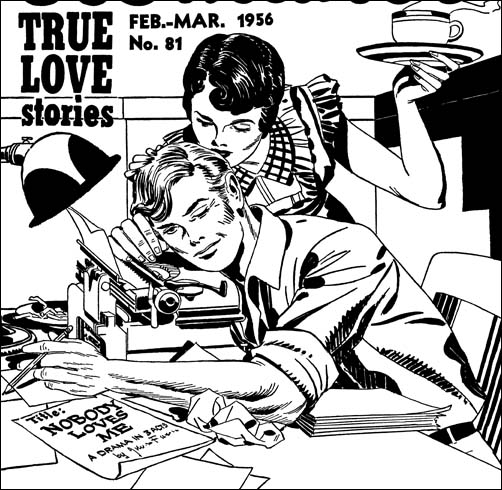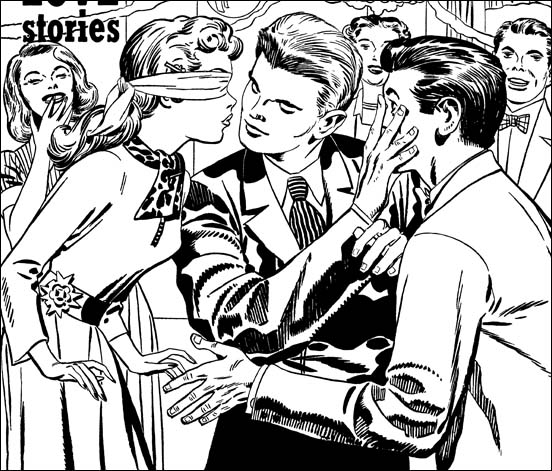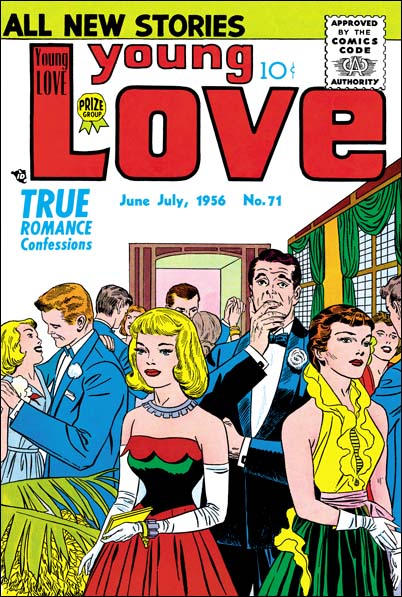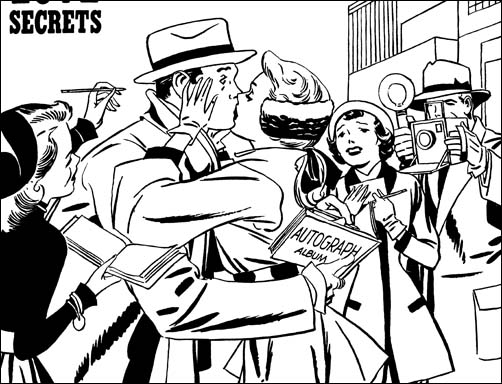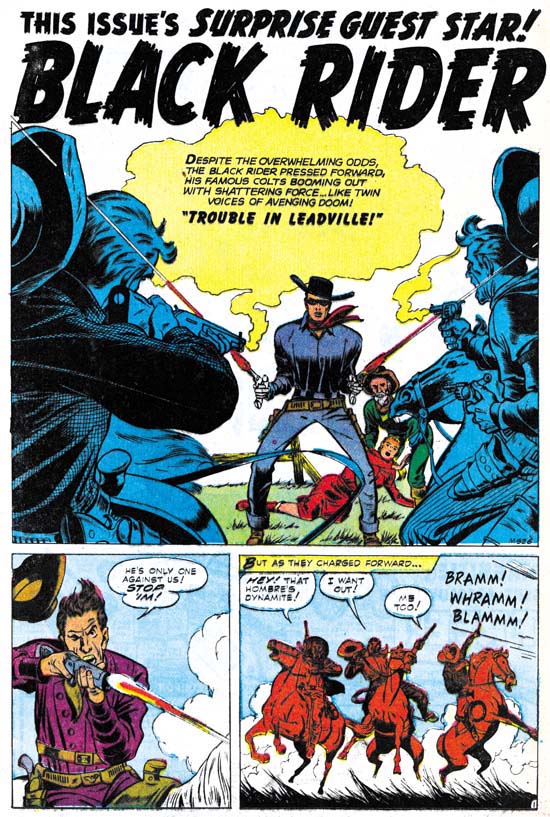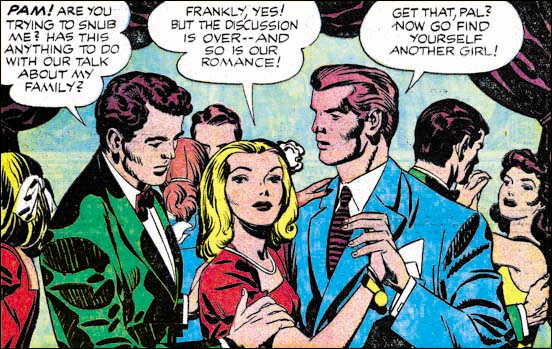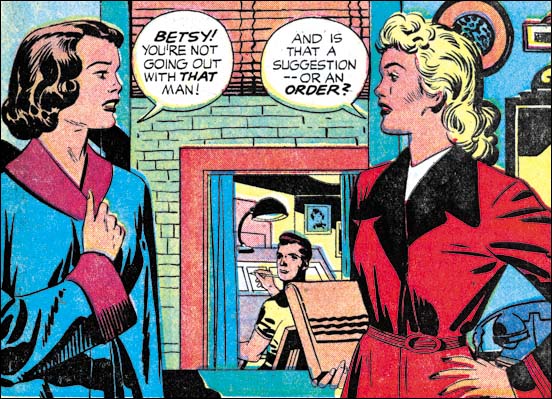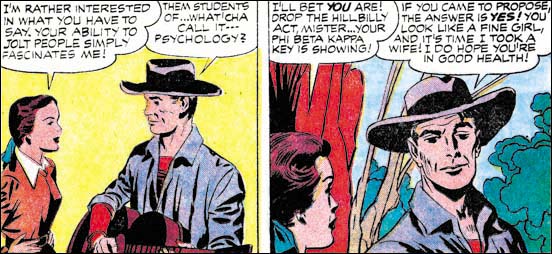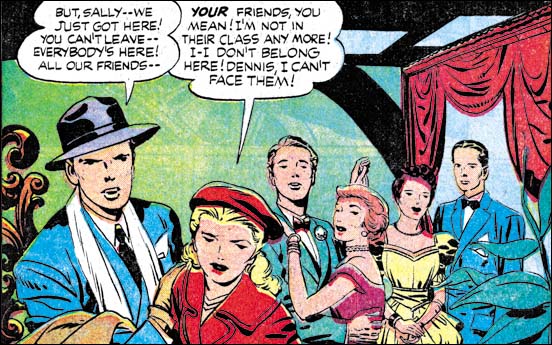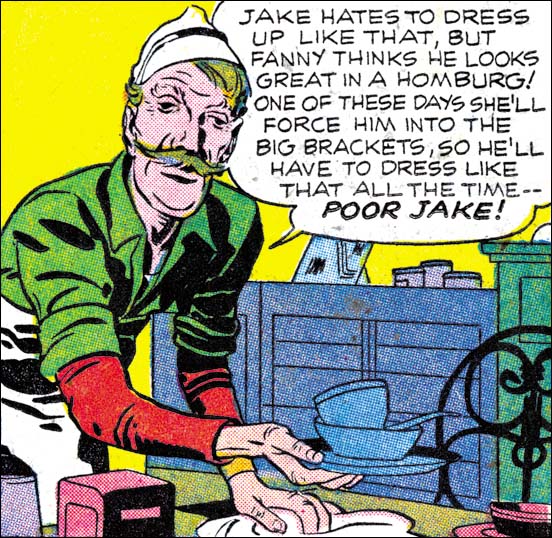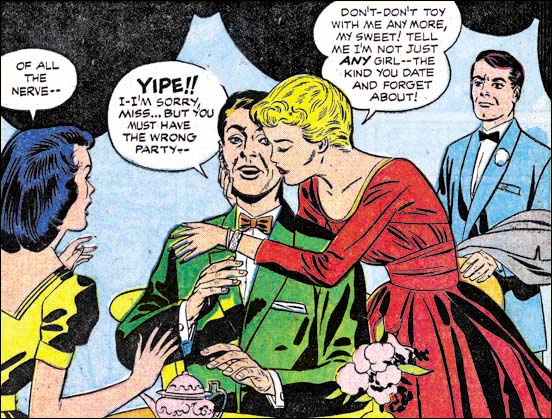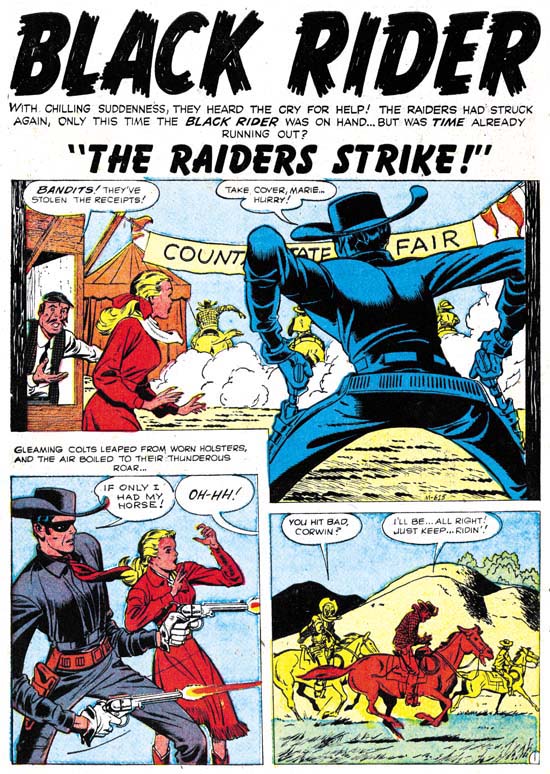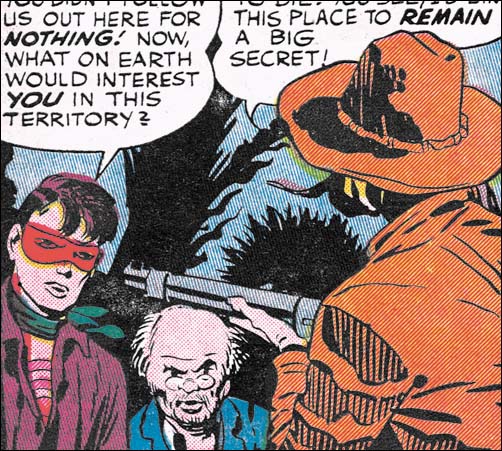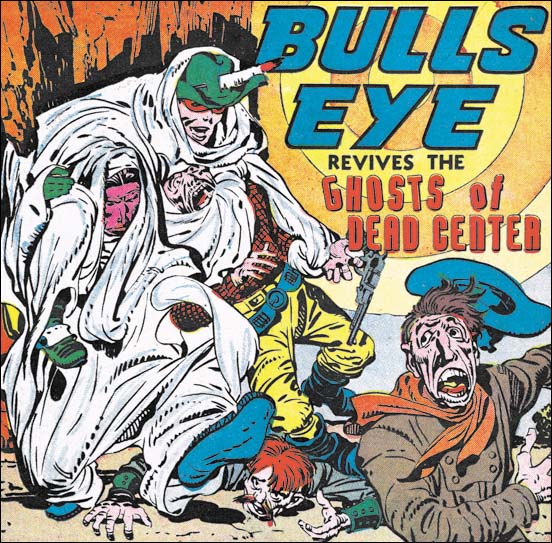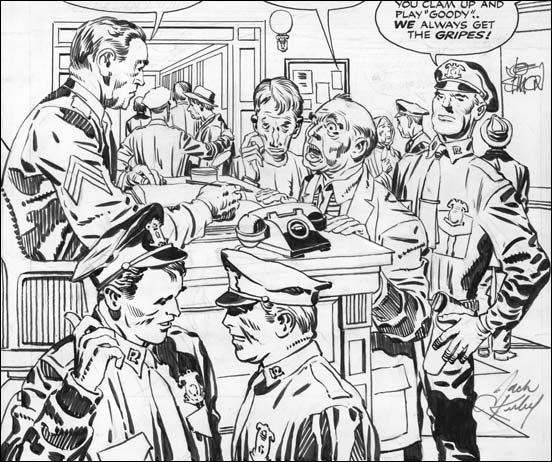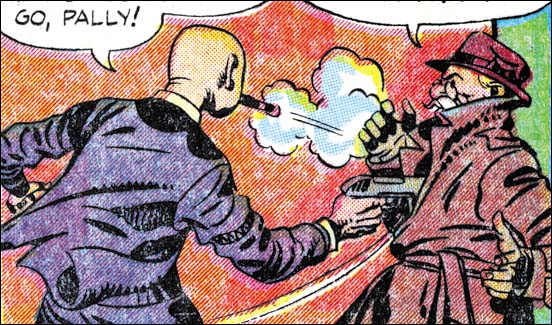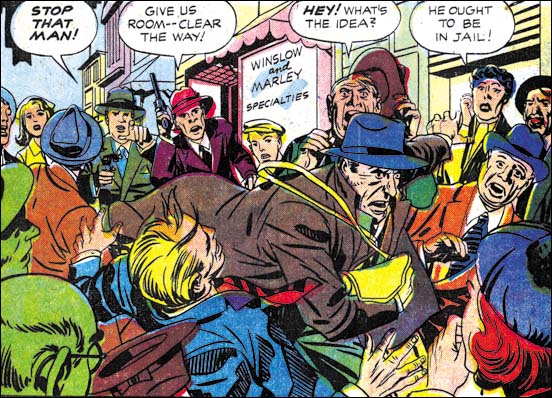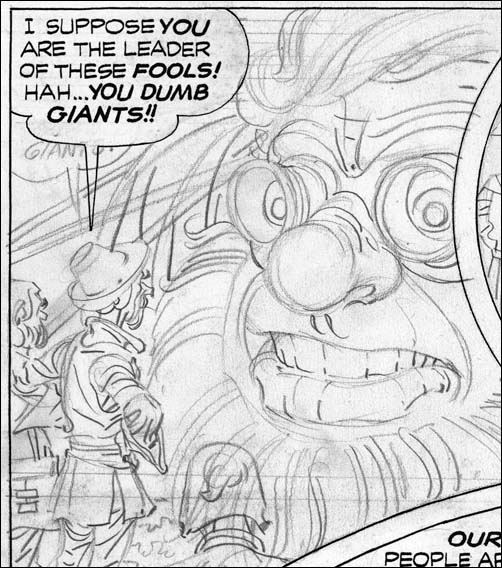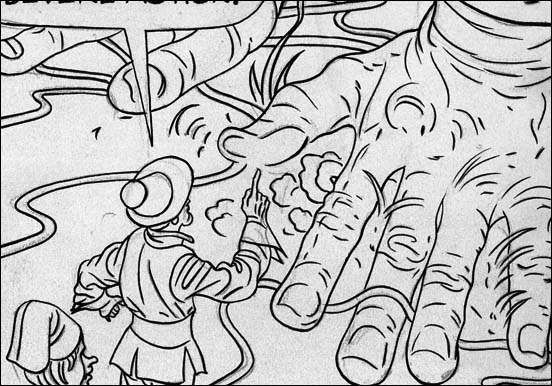Towards the end of 1956 (I am using comic book cover dates throughout this serial post) Jack Kirby began to do freelance work for Atlas and DC. This did not mean the end of Simon and Kirby productions but their working relationship must have changed. Although Joe Simon took part in presenting the Challengers of the Unknown to DC he was not involved in any of the actual freelance work that Jack did for DC or Atlas.
Among the earliest of the work Jack did for Atlas was the Yellow Claw. He started with issue #2 and therefore did not have anything to do with the title’s creation. Nonetheless Kirby clearly had a lot of control on the contents of the issues he did (#2 to #4). The stories are nothing like those from YC #1 and are pure Kirby. As I said in Chapter 7 for my serial post of The End of Simon and Kirby, I consider These Yellow Claw work by Kirby to be nothing short of masterpieces. The issues of interest for this serial post on Kirby’s inking are YC #2 and #3, in those issues Jack did his own inking. Whereas YC #4 was inked by someone else, with pretty horrendous results.

Yellow Claw #2 (December 1956) “Concentrate On Chaos” splash panel from page 1 pencils and inks by Jack Kirby
If you have been following my serial blog on Kirby’s inking styles this splash should be recognized as a Fine Studio spotting. Jack had used pretty much the same method in some of the Prize romance covers earlier in the year. The Studio Style had been a mainstay of S&K for about a decade. Not that it was entirely static but if anything it evolved into even bolder effects. I cannot say why, but in a short time Jack transformed it. Going from coarse to a finer lines may not seem like much, but it had a big effect on the final image. New here to Jacks inking was the use of a pen, previously all spotting was done using a brush. It was a pen that now did all the pickets of the picket fence patterns. Even further from the standard Studio Style was the use of a pen to just provide grays, such on the sole of the foot.
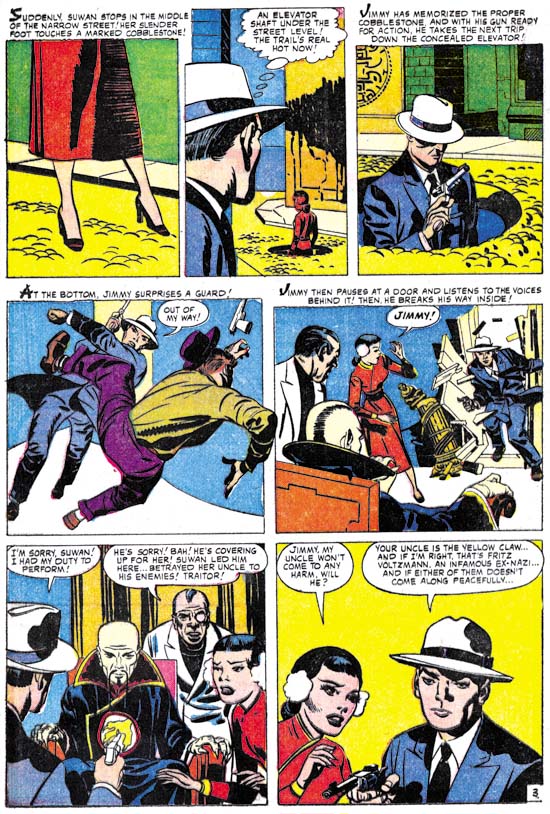
Yellow Claw #2 (December 1956) “The Yellow Claw” page 3 pencils and inks by Jack Kirby
Not all the work in Yellow Claw used pen work and picket fences. These techniques take greater effort and more time. As can be expected it was in the regular story panels where the finer work was sometimes abandoned. When that happened, as for example page 3 from the story “The Yellow Claw” (see above) the results look very much like the Austere Style. A lighter look, black areas often made by flooding an area with ink and simple spatulate cloth folds. Note the presence of shoulder blots, this is a quintessential Kirby trademark although possibly used by Joe Simon as well.

Yellow Claw #3 (February 1957) “UFO, The Lighting Man” page 1 pencils and inks by Jack Kirby
But Austere Style inking was not limited to Yellow Claw story panels. Look at the above splash from YC #3. Although the use of a pen is still evident what is missing are typical Studio Style brushworks such as drop strings or picket fences. Ignoring the use of the pen, the actual brushwork looks like very typical Austere style.
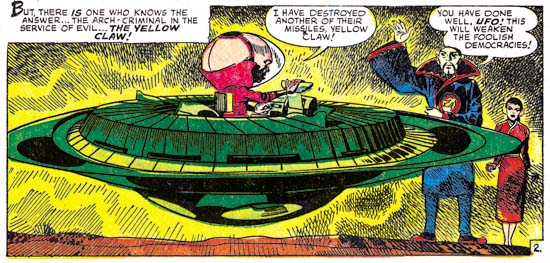
Yellow Claw #3 (February 1957) “UFO, The Lighting Man” page 2 panel 6 pencils and inks by Jack Kirby
The last panel on page 6 shows that pen work could also appear in the story art as well.
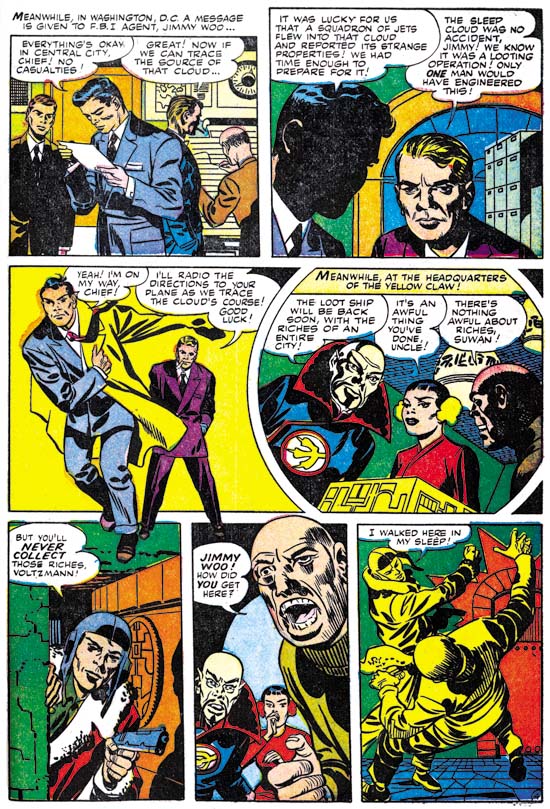
Yellow Claw #3 (February 1957) “Sleeping City” page 4 pencils and inks by Jack Kirby
Another example of mostly Austere type of inking on a story page. But look at the last panel with Fine Studio style using pen.

Yellow Claw #3 (February 1957) “The Yellow Claw Captured” page 4 panel 1 pencils and inks by Jack Kirby
I wanted to end my examination of Kirby’s Yellow Claw inking with a panel showing spotting technique that is a holdover from the standard Studio style. This is what I call the abstract arch shadow. It was not used nearly as often as some of the other inking methods that I have discussed. But it has a long history of use and given enough pages any work done in the Studio style is bound to have examples of abstract arch shadows. This is another inking method that I have not seen used outside of Simon and Kirby (or just Kirby) productions. Like shoulder blots, I do not quite get what abstract arch shadows are supposed to represent. Nonetheless when present they can be important components of the composition and make the page more interesting.

Astonishing #56 (December 1956) “Afraid To Dream” page 1 pencils and inks by Jack Kirby
I previously discussed this work. Looking over it again for this serial post I still conclude that the spotting looks like Jack Kirby’s work. It is another example of his Fine Studio style. That is not to say that it is as nice an inking job as Jack’s work in Yellow Claw. Instead the inking looks a little rushed.
Also done at this time was “Poker Face” published in Strange Tales of the Unusual #7. I will be posting an image of that story in an accompanying post. As for the inking it is typical Austere style along with occasional pen work. This job was as nicely done, if not so elaborate, as Jack’s Yellow Claw inking.
In a comment to another of my posts Ger Apeldoorn advanced his hypothesis that “Afraid To Dream” and “Poker Face” may have been originally been Simon and Kirby productions created for Harvey’s Black Cat Mystic. As I mentioned in the previous chapter, Black Cat Mystic had an incredibly bad schedule with long periods between issues. Ger suggestion is that due to that schedule Jack took the work to Atlas instead. Without a doubt either of these two stories would have fit quite well with the others that S&K did for Black Cat. The only thing that bothers me about this thesis is that the inking on these two stories, particularly the use of a pen, fit better in with the rest of Kirby’s Atlas work then they do for his Black Cat jobs. Still the inking could have been done or modified after the decision to change venues. Anyway Ger’s suggestion is intriguing.

Black Rider Rides Again #1 (September 1957) “Duel At Dawn” splash panel from page 1 pencils and inks by Jack Kirby
When recently I posted on Black Rider Rides Again #1 I had concluded that the pen work was added to the art after it was delivered to Atlas. Now that I have reviewed the Yellow Claw work I feel I have to withdraw my previous opinion. The pen work in Black Rider matches what was done in Yellow Claw. In YC there can be no question that the pen work was part of the original inking, it is so perfectly integrated with the rest of the spotting. This use of a pen still bothers me. It seems so out of place from the days of the Simon and Kirby studio, I cannot recall his using a pen before. I will return to this issue next week in my chapter on freelance work done for DC.
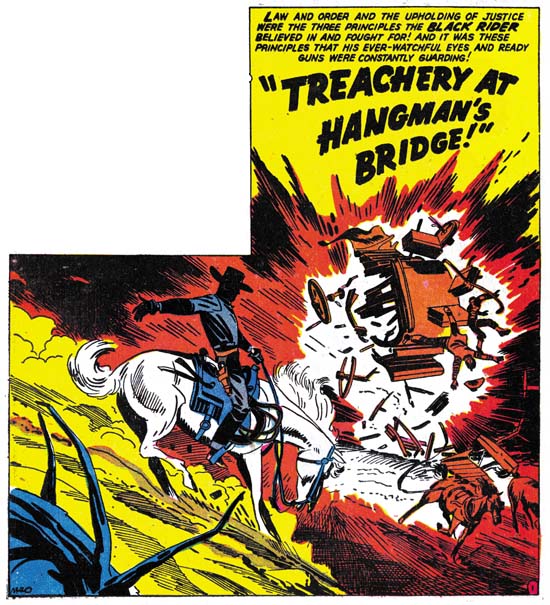
Black Rider Rides Again #1 (September 1957) “Treachery At Hangman’s Bridge” splash panel from page 1 pencils and inks by Jack Kirby
Other then the use of pen, the rest of the spotting for Black Rider is a good match for the Austere style. There is not much use of drop strings or picket fences. Well that is generally, Jack did use a modified drop string to texture the cactus in the “Duel At Dawn” splash panel. When dramatic effects called for it (such as the Hangman’s Bridge splash above), the image would be rather dark. Still over all the art has a light look that is decreased only partly by the use of a pen.
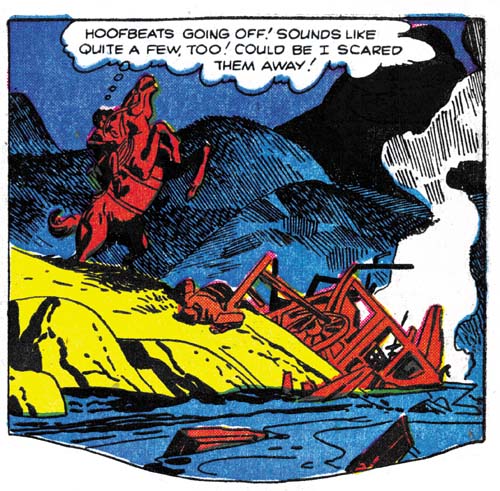
Black Rider Rides Again #1 (September 1957) “Treachery At Hangman’s Bridge” page 2 panel 2 pencils and inks by Jack Kirby
Sometimes I feel the pen work is effective, sometimes intrusive. Oddly sometimes I find it both. In the second panel on page 2 of the Hangman’s Bridge story the contrast between the Austere brush work in the foreground and the use of pen in the background gives depth to the image. Unfortunately it also distracts from the drama provided by Black Rider’s rearing horse.
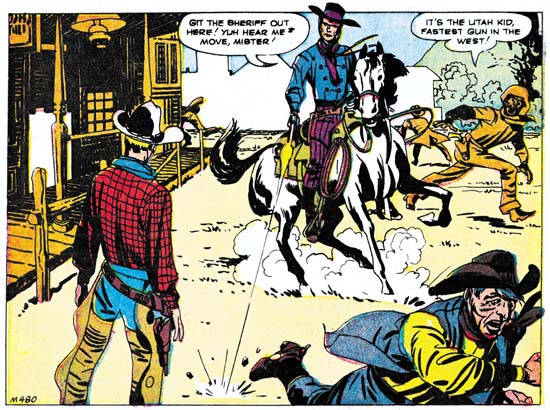
Two-Gun Western #12 (September 1957) “No Man Can Outdraw Him” splash panel from page 1 pencils and inks by Jack Kirby
This is another story that I have posted on recently. Here Jack provides a pure Austere inking. Very minimal brushwork without any of the more complicated techniques. Next to Yellow Claw, this is my favorite Kirby piece from this period. I cannot say if Kirby did the writing, but it is a great story. The figures are more elongated then typical for Kirby, a trait also found in Black Rider. This and the matching inking gives the art an almost expressionistic look which Jack puts to good use.
So far all the Kirby inking Kirby pieces I have seen that were done for Atlas were all pre-Implosion. Kirby did not ink even some with job numbers that indicate they were made before the Implosion but were published afterwards. I am not very knowledgeable about Atlas so perhaps Kirby did some inking later that I have not seen. But it sure looks like Kirby stopped inking for Atlas after the Implosion.
Jack Kirby’s Austere Inking, Chapter 1, Introduction
Jack Kirby’s Austere Inking, Chapter 2, Mainline
Jack Kirby’s Austere Inking, Chapter 3, A Lot of Romance
Jack Kirby’s Austere Inking, Chapter 4, Prize Covers
Jack Kirby’s Austere Inking, Chapter 5, Harvey
Jack Kirby’s Austere Inking, Chapter 7, DC
Jack Kirby’s Austere Inking, Chapter 8, More Harvey
Jack Kirby’s Austere Inking, Chapter 9, More Prize
Jack Kirby’s Austere Inking, A Checklist and a Glossary
other post with Kirby inking Kirby:
Strange Tale Indeed
Battleground, Jack Kirby’s Return to Atlas
Captain 3D


